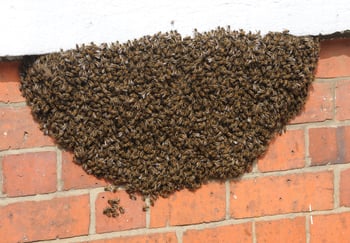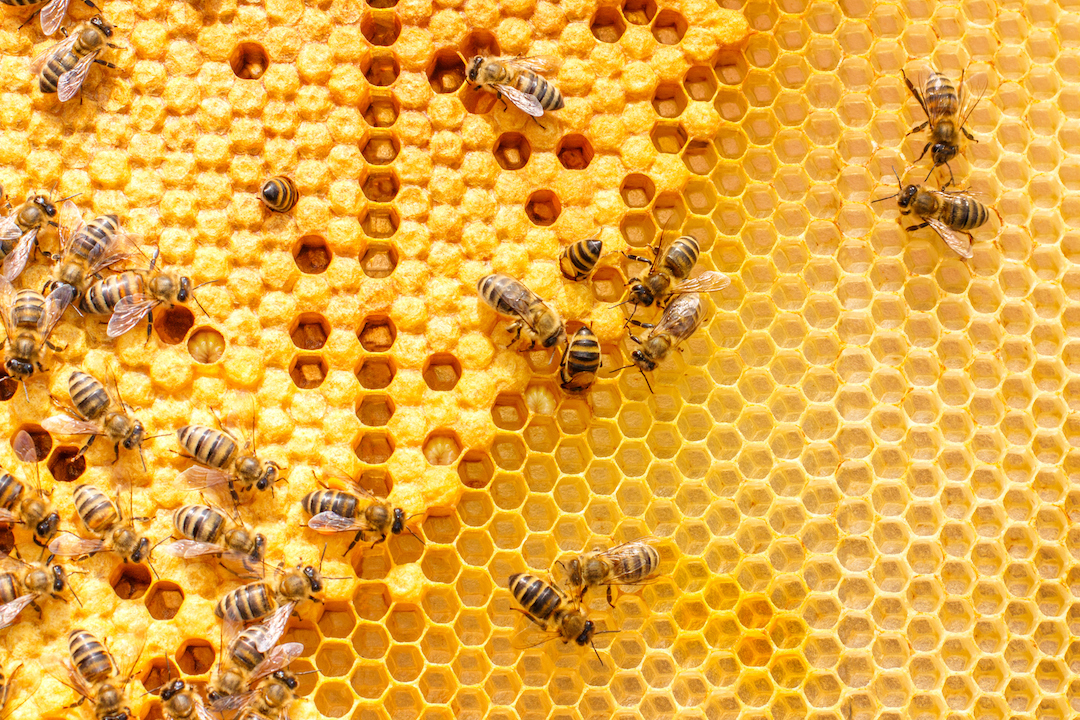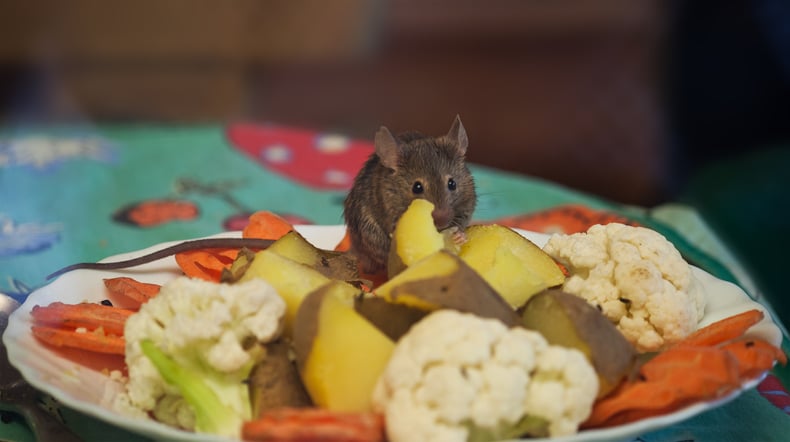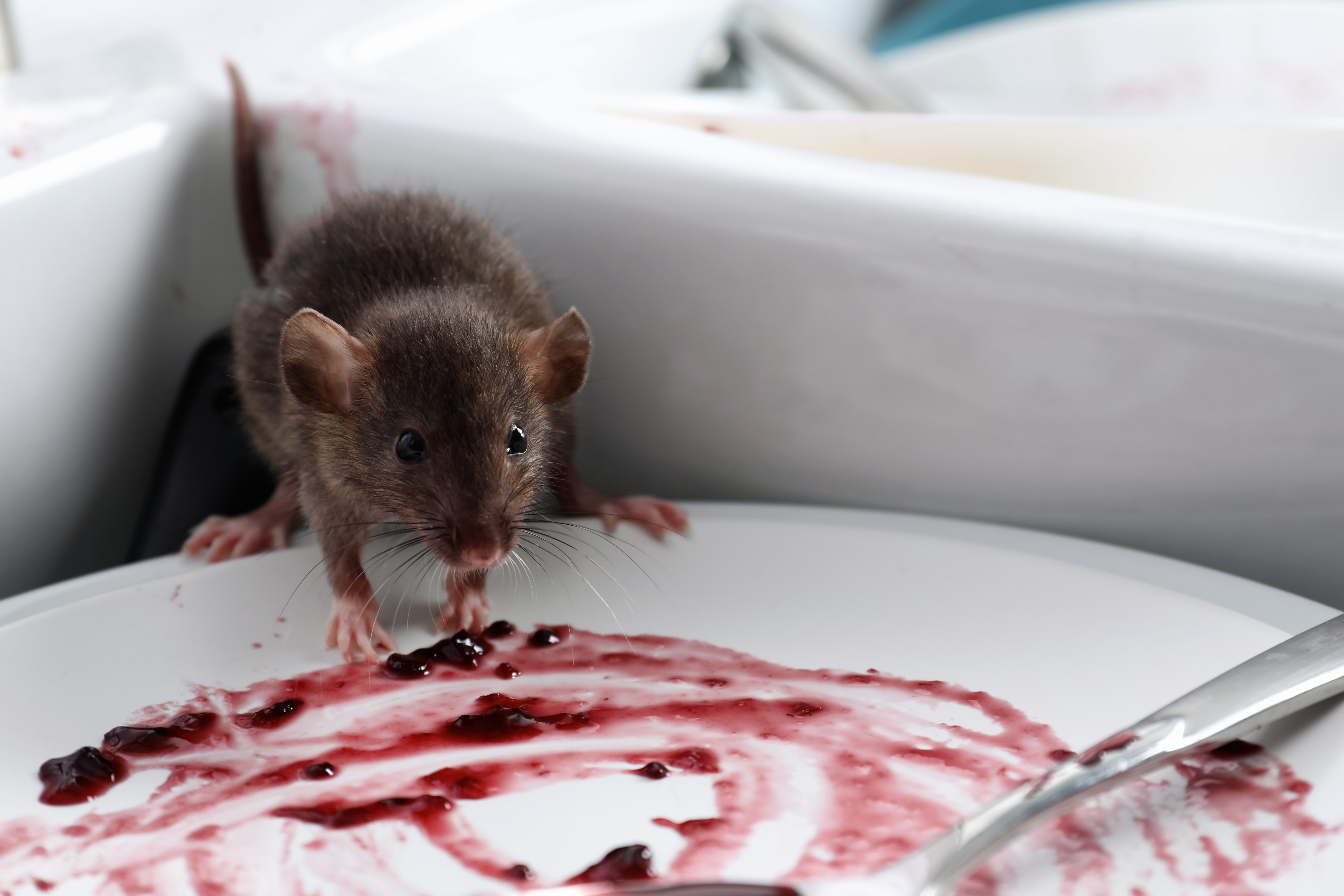Ah, the delightful buzz of bees in the air, a sure sign that summer has arrived in California! These fascinating creatures are not only nature's little marvels but also vital pollinators that play a significant role in our ecosystem. However, as the warm season settles in, it’s important to learn about their behavior and how to coexist peacefully with these buzzing visitors. In this article, we'll delve into the world of bees, exploring their behavior during the summer months and offering insights on insect pest control to manage their presence around our homes. So, sit back and let's explore the enchanting world of bees in California summers!
Bees Behavior in Summer Months in California
 In the summer months (just as crickets, ants, cockroaches, pincher bugs, silverfish and spiders), bees behavior undergoes some changes as they adapt to the warm weather and the abundance of blooming flowers. Some of those behavioral characteristics during the summer months include:
In the summer months (just as crickets, ants, cockroaches, pincher bugs, silverfish and spiders), bees behavior undergoes some changes as they adapt to the warm weather and the abundance of blooming flowers. Some of those behavioral characteristics during the summer months include:
- Foraging: During summer, bees are actively engaged in foraging for nectar as a source of energy and pollen as a protein-rich food for their young.
- More daylight: The longer daylight hours and warmer temperatures in summer stimulate higher levels of bee activity around gardens, parks, and other areas with abundant floral resources.
- Swarming: Swarming is a natural reproductive behavior of honeybee colonies. During the summer months, bees may form new colonies by swarming. A swarm occurs when a queen bee and a portion of the worker bees leave the parent colony to establish a new hive.
- Time to clean their house: Summer is a time of intense hive maintenance for bees. They work diligently to keep the hive clean, regulate temperature, and protect it from predators and intruders.
How Different is Bees Behavior from Spring to Summer in California
Bees have their own unique way of adapting to the shifting rhythms of the year. As spring gives way to the warmth of summer in California, the behavior of bees undergoes some intriguing transformations. So, let's take a moment to explore how our busy little friends evolve and thrive during these sunny months.
In the vibrant springtime, bees emerge from their cozy winter hibernation, eager to embark on their noble mission of pollination. As the days grow longer and temperatures rise, their activities shift into high gear. Here's how the behavior of bees differs from spring to summer:
- Food search: During spring, bees embark on their first food search expeditions, exploring the awakening landscape for precious sources of nectar and pollen. However, as summer arrives, the world around them bursts into a colorful tapestry of blooming flowers and flourishing vegetation. This abundance of floral resources becomes a paradise for our bees as they busily flit from one flower to another, collecting nectar and pollen to nourish their colonies.
- Expanding Colonies: Spring serves as a time of growth and expansion for bee colonies. As the season progresses, the population within a hive increases rapidly. This is translated into the constructions of new wax comb cells, creating ample space to accommodate their growing numbers and the bountiful harvest they bring back from their foraging expeditions.
- Hive Maintenance: In summer, bees diligently repair and fortify the hive, ensuring its integrity as the hub of their bustling society. Cleaning and grooming rituals become a common sight, as bees meticulously remove debris, pests, and any intruders that may threaten their precious colony.
- Efficient Temperature Regulation: Just like us, bees need to beat the heat during scorching summer days. To maintain a comfortable temperature within the hive, bees fan their wings vigorously creating a breeze that circulates air throughout the hive, keeping it cool and comfortable. Talk about air conditioning! This remarkable behavior ensures the survival and well-being of the colony amidst the rising temperatures.
- Community Cooperation: In the spirit of teamwork, bees in summer form a harmonious society where roles are clearly defined. The worker bees, dedicated to foraging and hive maintenance, collaborate seamlessly to ensure the hive's prosperity. Meanwhile, the queen focuses on her vital task of laying eggs, sustaining the growth of the colony. This cooperative spirit and division of labor are essential for the survival and success of the beehive.
Why Do Bees Invade My Home in Summer
It's not uncommon to find bees making themselves a little too cozy in our living spaces during summer. But why do these insects decide to pay us a visit when we'd much rather enjoy their company from a safe distance? Let's delve into the world of bees and uncover the reasons behind their summertime home invasions.
- Seeking Shelter: Just like us, bees crave comfort and protection from the scorching heat and other elements. Your home, with its nooks, crannies, and cozy corners, can seem like an inviting oasis to a weary bee after a long fly. They may take advantage of small openings, gaps in windows, or cracks in the walls to find refuge from the sweltering temperatures outside. After all, who can blame them for wanting to beat the heat?
- Accidental Entry: Bees are skilled navigators, but sometimes, they can accidentally find themselves inside our homes. Open windows and doors can also serve as unintentional entry points for these curious creatures. Once inside, they may struggle to find their way back out, leading to their unwelcome presence in your living space.
- Searching for Food and Water: Bees have an insatiable appetite for nectar and pollen, which are essential for their survival. Sometimes, they may venture into our homes in search of these food sources. They might be enticed by a bouquet of fresh flowers on your dining table, the remnants of a sugary drink left unattended or they might just be looking for a sip of water to stay hydrated. They may be drawn to leaking pipes, dripping faucets, or even pet water bowls inside your home.
- Misplaced Swarms: Sometimes swarms can end up near or even inside residential areas, including your home. While swarming bees are typically docile and not looking to establish a permanent residence, their presence can be alarming and prompt homeowners to seek assistance in managing the situation.
- Attracted to Scents: Bees have an acute sense of smell and are particularly drawn to certain scents. Fragrances from perfumes, scented candles, or even the aroma of food can pique their interest and lead them to explore areas of your home. The scent of honey or beeswax-based products can also inadvertently attract bees, as they may mistake these scents for potential food or nest sites.
What Can Be Done to Manage Bees Infestations During the Summer Months in California?
When dealing with bees in and around your home during the summer months, it is essential to prioritize their conservation while ensuring your safety and peace of mind. Here are some effective strategies for managing home bee infestations:
- Identification: Properly identify the bee species before taking any action. Many bees, such as honeybees and bumblebees, are vital pollinators and beneficial to the environment. If you're unsure, consult with a local beekeeper or you can give us a call and our own entomologist can provide you with assistance.
- Bee-proofing: Seal any openings or gaps in the exterior of your home to prevent bees from accessing potential nesting sites. Use caulk or weatherstripping to seal gaps around windows, doors, and utility entry points.
- Remove potential nesting and swarming sites: This can be done by addressing any decaying wood, tree stumps, or abandoned structures on your property. Ensure outdoor structures, such as sheds or playhouses, are well-maintained and free of gaps.
- Water Management: Fix any leaking pipes or faucets and remove standing water sources, such as puddles or open containers, which may attract bees. If possible, provide a shallow water source away from your home, like a bird bath with a small landing pad to minimize bee visits.
- Landscaping Modifications: Consider diversifying your garden by including a variety of flowering plants that bloom at different times. This spreads out the bee foraging activity and reduces concentration around your home.
- Insect pest control and bees removal: If a bee colony has established itself within your home or poses a significant risk to your family, consult with a professional beekeeper or residential pest control expert experienced in bee removal. Our technicians can safely relocate the bees and address any structural concerns.
Conclusion
Summer brings an increased presence of bees in California, as they engage in foraging, colony expansion, and hive maintenance activities. While bees are essential pollinators, their proximity to our homes can cause concerns. As you learn how to get rid of bees, it is important to understand their behavior, implementing preventive measures, and seeking insect pest control assistance when necessary, we can foster a harmonious coexistence with bees while ensuring our comfort and safety during the summer months.





.webp)



Submit a Comment